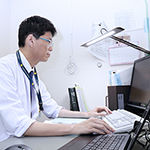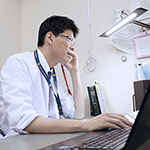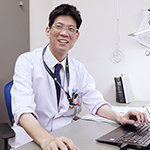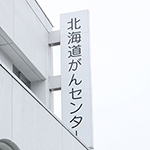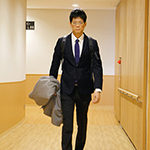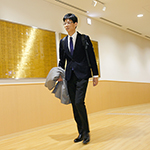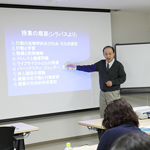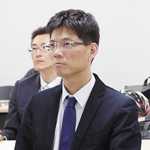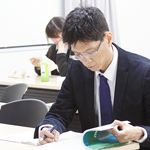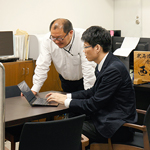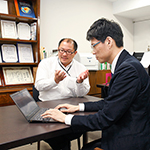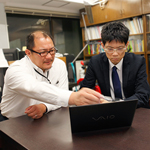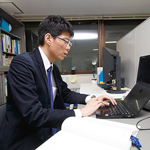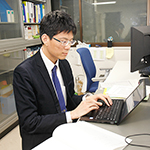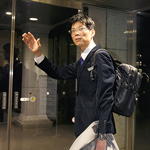
-
School of Medicine
-
Educational Content
-
Prospective Students
-
Current Students and Alumni
International Affairs

-
Graduate School of Medicine
-
Educational Content
-
Prospective Students
-
International Affairs

-
Graduate School of Biomedical Science and Engineering
-
Educational Content
-
Prospective Students
-
Other

-
Faculty of Medicine
-
Organizational Structure
-
Industry-academia Cooperative Projects

-
Overview
-
Entrance Examinations
-
Publications and Promotional Material
-
Various Types of Data
A day for Takahiro Fujita (Master's Program)
- HOME
- Graduate School of Medicine
- Daily activities of students of the graduate school
- A day for Takahiro Fujita (Master's Program)
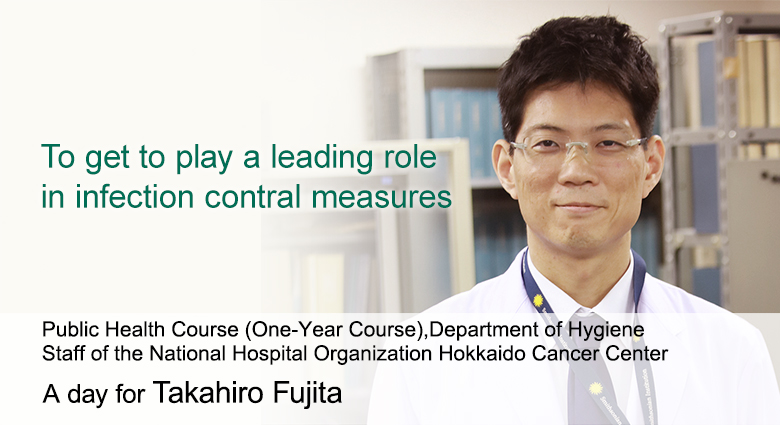
Click the image to enlarge it.

On-the-job
(at the Hokkaido Cancer Center)
I work as a physician at the National Hospital Organization Hokkaido Cancer Center, engaged in infectious disease (ID) consultation and infection control measures for the hospital. In ID consultations, I examine management plans as an ID specialist together with other staff of the department for infected patients (or patients at risk of infection). This role is common in medical institutions in the US, but exists in only a few medical institutions in Japan, and very few in Hokkaido.
Arriving at school
When I have lectures, I leave work in good time, and go by subway to the school where I graduated, Hokkaido University. Time permitting, I have a light meal at the cafeteria of the School of Medicine.
The Public Health Course of the Master’s Program is a new course commenced this year, and it has one- and two-year courses. Since April, ten students from various backgrounds are studying here to acquire a degree as Master of Public Health (MPH). I belong to the one-year course designed for students with practical experience, such as physicians, dentists, and pharmacists.
At the lecture room
Today I listened to a lecture, “Basic social and behavioral sciences” by Professor, Junji Otaki, a specialist in General Practice and medical education (Hokkaido University Center for Medical Education, left and middle photos). This is part of a series of lectures in behavioral sciences and social determinants for health, and today we had the lecture and we students discussed among ourselves based on a part of a movie we watched.
It is enjoyable for me to recharge my batteries, gaining knowledge, spending enough time to really get to know about matters, unlike picking up bits and pieces of knowledge fragmentarily by self-study.
The Public Health Course offers an attractive opportunity where we can develop an extensive network of contacts through lectures by external lecturers, professors of other universities and specialists in public health working in local and central government, as well as the six full-time lecturers including Professor Otaki. If we survive the first half of the one-year curriculum, when we have many lectures, we get time to devote ourselves to research and writing of papers in the second half of the year.
At the professor’s office
After the lecture is finished, I visited the office of my faculty advise, Hiroshi Nishiura (left in the photos), and he instructed me in how to fit and arrange data for infectious diseases into a mathematical model.
Professor Nishiura is known worldwide for research on mathematical models of infectious diseases, but I had never met him before the guidance for the entrance examination to the Public Health Course. For me, epidemiological knowledge is necessary in dealing with infection control measures. “I had long wanted to have the opportunity to learn public health matters systematically”, and Professor Nishiura encouraged me to try.
Literature search
After the meeting, I searched through articles related to my research in the laboratory for about an hour. I often spend longer time on literature search than I would have expected because the library of the university offers easy access to so many papers. Since it is not a good idea to spend too much energy and concentrate too hard from the beginning of the week, I will go home soon.
Because I have been engaged in OJT (On-the-Job Training = vocational education through practice) at work, I want to strengthen my academic backbone at the graduate school and become able to convey the knowledge of infection control measures to young people. After graduation I wish to play a leading role in infection control measures in Hokkaido.
(Interviewed in May 2017)
Note:Cooperation was obtained from the National Hospital Organization Hokkaido Cancer Center.
Webpage of the Department of Hygiene which this graduate school student belonged to


